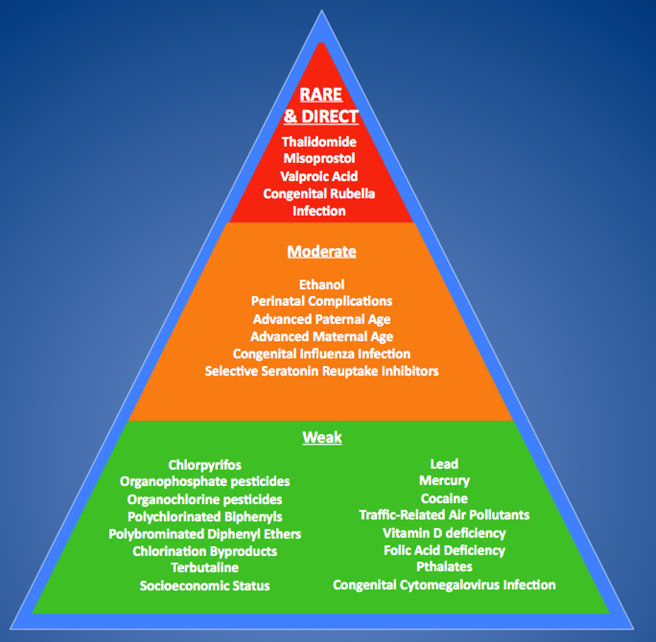What Evidence Supports a Role for the Environment in Autism?
For a look at research that supports a larger role of environment in ASD diagnosis, check out the following page.
For decades, science has focused on the genetic causes of autism. However the increasing prevalence cannot be wholly explained through genetic factors. The belief that autism is a genetic disorder originated with the findings of several twin studies that reported high autism (50–70%) concordance rates for identical twins and low (0–10%) concordance rates for fraternal twins.1,2,3 However, a recent study of a larger and more diverse cohort in California reported similar (50–70%) autism concordance rates for identical twins but much higher (35%) concordance rates for fraternal twins.4 Further analysis estimated that genetic factors were responsible for 38% of Autism Spectrum Disorder liability and environmental factors for 58%.4 These findings represent a paradigm shift, suggesting that environmental factors play a more prominent role than previously thought in the etiology of Autism and Autism Spectrum Disorders.
In this section we provide an overview of the research findings suggesting a role for the environment in the development of autism. We also introduce a novel categorization system to summarize the strength of the scientific evidence supporting an association between a specific environmental factor and autism/Autism Spectrum Disorders. Each environmental factor is assigned a category based on the preponderance of evidence, the concordance of individual study findings, or the existence of a validated animal model of autism.

The Pyramid of Environmental Factors Associated with Autism. Each environmental factor is assigned a category based on the number of studies, agreement among studies, and the existence of an established animal model of autism.
- Rare and Direct: Factors rarely encountered but directly linked to autism in numerous, peer reviewed publications and in established animal models.
- Moderately Associated: More than 10 repeated, peer-reviewed publications citing a positive association and/or an established animal model of autism.
- Weakly Associated: Fewer than 10 repeated, peer-reviewed publications citing a positive association OR the existence of numerous discordant studies.
| References: |
|

